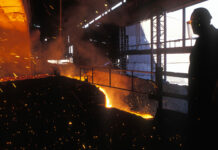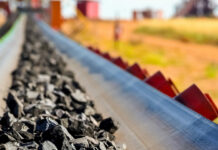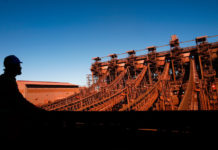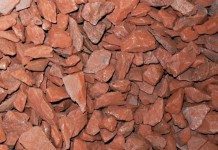
[miningmx.com] — KUMBA Iron Ore has reached a “new spirit of cooperation’ with Transnet Freight Rail (TFR) over the expansion of the Sishen-Saldanha export corridor beyond a capacity of 60 million tonnes (MT) per year.
That’s according to CEO Chris Griffith , who spoke to financial media at the group’s Sishen iron ore mine.
Griffith said Kumba, rival iron ore exporter Assmang and manganese producer Samancor had agreed with TFR to appoint Australian consultants Aurecon to carry out a new study on how the railway line and the port facilities at Saldanha Bay might be expanded.
Griffith added the initial report from the new study should be available by about July.
The development is a breakthrough, given the situation that ruled as recently as November.
Griffith reportedly upset TFR by commenting to Miningmx during a visit to Kumba’s developing Sishen South mine that he felt the railway line could be run better with private sector involvement.
Griffith repeated that view in his latest assessment, but stressed that TFR had improved its performance markedly in recent months on the operation of the line.
Kumba boosted its export sales of iron ore from 24.9mt in 2008 to 34.2mt in 2009.
Sishen’s current project pipeline can add another 29% to present export levels, while the mine has the potential to produce about 70mt annually by 2019.
Griffith said Aurecon had been appointed to bring “fresh eyes’ to the future expansion of the Sishen line after TFR came up with a capital estimate flatly ruled out by Kumba.
He said: “TFR came up with a capital cost number for the expansion beyond 60mt, which I just wiped from my memory because it made any expansion impossible.
“That capital cost would have resulted in an incredible tariff rate to be charged by TFR.
“We could not have the same guys doing the same stuff here, which is why the four partners agreed to bring in Aurecon. Hopefully, the new study is going to come up with a different approach and a more reasonable number.
“We have also placed firmly on the table that, while we are not that concerned over who owns the railway line, we do want to have a say in the running of the operation.’
Griffiths said the inclusion of Samancor in the negotiations also respresented a major change in approach.
Previously, the iron ore exporters were against sharing capacity on the line with the manganese exporters for a number of reasons, including possible contamination of iron ore stockpiled at Saldanha Bay.
Griffith said in November such potential contamination was “a huge issue’ for the iron ore exporters and that “the expanded port has to be designed to make sure that this does not happen’.
Turning to iron ore pricing, Griffith said Kumba’s strategy remained one of letting the big three (Rio Tinto, BHP Billiton and Vale) settle first, after which Kumba would finalise its prices.
He said Kumba would support the move to more frequent index pricing such as the quarterly system implemented by the three major iron ore producers “because there’s more value there’.
He added Kumba intended to continue selling 85% to 90% of its exports on long-term volume contracts. This was because it added value from the group’s “niche product strategy’ utilising the high grade and hardness of the lumpy ore produced by Sishen.
Kumba’s current cash cost of producing a ton of ore is $11.8/t. The free-on-board (fob) cost at Saldanha Bay is about $20/t after taking into account railage and port handling costs.
The landed cost of a tonne of iron ore exported from South Africa to China is about $40/t after freight charges.
Last year’s benchmark China landed iron ore price was $62/t. Since July the index price for 62% fe iron ore landed in China has shot up, reaching $130/t in January and around $165/t currently.
Griffith said: “The last nine months of this year should see some very good prices coming through. Kumba should have another fantastic year, although we have a few distractions for the corporate team to deal with.’











